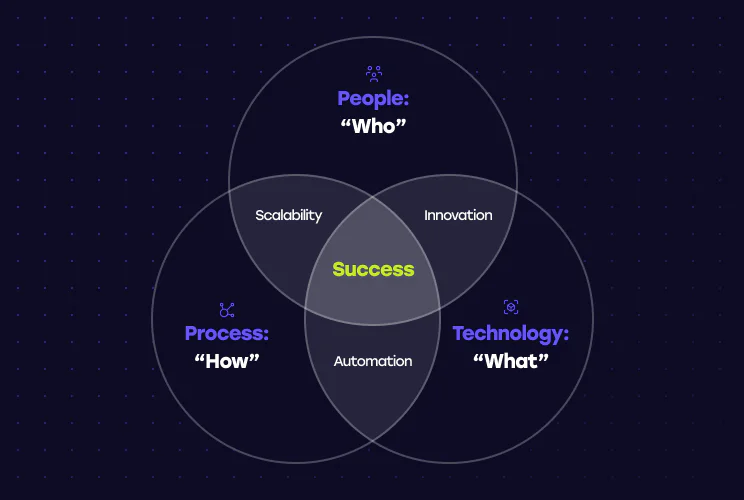A study by Salesforce in 2023 revealed that 80% of customers believe the experience a company provides is just as important as its products and services. Those same customers expect companies to adapt to their changing needs and provide personalized support. In a switch culture, those organizations that offer a great customer experience can insulate themselves from high churn rates. Among the tools available to elevate customer experience (CX), co-browsing stands out as a transformative technology. When integrated effectively, co-browsing enables real-time collaboration between customers and support agents, creating revenue generation opportunities and improving customer support outcomes.
This blog outlines a three-step approach to help CX owners and influencers build an effective business case for integrating co-browsing into their CX workflows.
Step 1. Surveying the landscape
Before you make a case for change, you need to have a clear picture of the current situation. For CX workflows this means understanding the journey your customers go on when they engage across any digital platform. At this stage, you’re not looking to make judgments as to what works and what doesn’t; just defining the landscape in which you operate.
With an understanding of end-to-end user journeys across all touchpoints, you can identify pain points for customers – those critical moments when they are most likely to seek support. This allows you to define what support looks like for your organization, plus identify areas for optimization or areas of risk where friction is at its greatest.
User journeys are defined by people, processes and technology.

For CX transformation projects this involves two elements:
- Document customer journeys
- Catalogue existing tools
Process mapping will help define where new services and technologies can add the most value, ease the process of retrofitting or integration, and help break down barriers to adoption. When introducing a solution like co-browsing, you will need to know how you plan to integrate it with established technologies like CRM, live chat and self-service portals, plus emerging AI-driven solutions
This doesn’t have to be an onerous task. You don’t need to map every user journey to justify using co-browsing. Stick to the areas with recurring customer issues and where co-browsing can have the greatest impact.
STEP 1 KEY DELIVERABLE: a list of priority workflows (including people, process and technology) where CX could be improved.
Step 2. Identifying pain points
With a priority list in place, it’s time to identify the points of friction where co-browsing can add the most value. Implementing co-browsing as a targeted solution to specific problems is a more compelling argument than attempting to build a generic business case; it allows you to define targeted benefits and prove a faster return on investment.
Identifying pain points is a mix of anecdotal and empirical evidence. At this stage, it is important to engage with key stakeholders to obtain a complete view of any issues – support operations analysts, customers, IT teams and support agents all provide valuable insight.
Customers are likely to be your primary source of information. Review customer complaint records, survey results and ticket logs to identify commonly occurring incidents where co-browsing can add value. Examples would include complex resolution issues, difficulty navigating digital platforms and completing online forms, or poor adoption rates for new applications.
Speak to your agents. They are the people that understand your customers better than anyone else. Conduct interviews and carry out internal surveys to uncover customer pain points, commonly occurring issues and the contacts that take the longest.
Analyze your data. Pinpoint areas where escalations occur frequently and review KPIs such as First Contact Resolution (FCR) and Average Handle Time (AHT) to identify areas where co-browsing can help support more complex interactions, break down communication barriers, educate customers, avoid hand-offs and repeat calls. These will be areas where automated responses don’t provide the answer and may include instances of high abandonment rates at the checkout in eCommerce platforms, complex technical issues on self-service portals, or extended product troubleshooting calls.
At this stage, it is worth taking a step back and ensuring your progress and findings align with your broader business and executive directives. If addressing these pain points will help your organization achieve its goals you will achieve greater mindshare, internal prioritization, adoption and momentum.
STEP 2 KEY DELIVERABLE: A prioritized list of problem areas where co-browsing can have the most impact.
Step 3. Defining the expected impact
Setting clear expectations ensures alignment among stakeholders and provides a framework for measuring the success of your co-browsing implementation. Defining Key Performance Indicators (KPIs) upfront enables you to track the value delivered over time.
Use your existing performance metrics to provide baseline figures for comparison and be realistic about your goals. First Contact Resolution (FCR), Average Handling Time (AHT), Customer Satisfaction Score (CSAT), and Net Promoter Score (NPS) all provide benchmark statistics that can be impacted by co-browsing.
Set smart objectives. They should be specific, measurable, achievable, realistic and have an appropriate timeline. Examples may include:
- Reduce average handle time for complex self-service portal support cases by 20% within 4 months of deployment
- Increase first contact resolution rates for navigation-related queries by 15% within the first quarter
- Reduce shopping cart abandonment rates for high-value goods by 10% over six months
Decide how you will capture the data required to support these objectives and how you will report on your performance. Consider using a custom dashboard to surface all the relevant information and real-time analytics to provide further insight.
STEP 3 KEY DELIVERABLE: A clear roadmap of expected benefits, backed by smart objectives and ROI metrics.
Co-browsing has the potential to revolutionize customer interactions by bridging gaps in understanding and communication. By mapping current workflows, identifying specific problem areas, and defining clear improvement goals, enterprises can ensure that co-browsing is not just a tool but a driver of revenue and efficiency.




